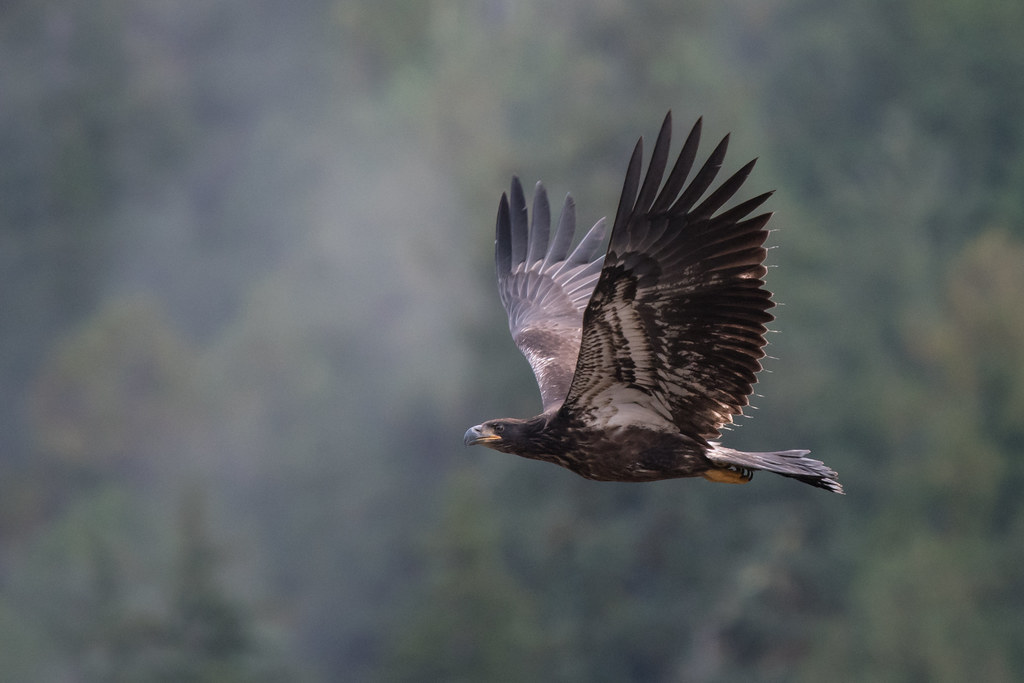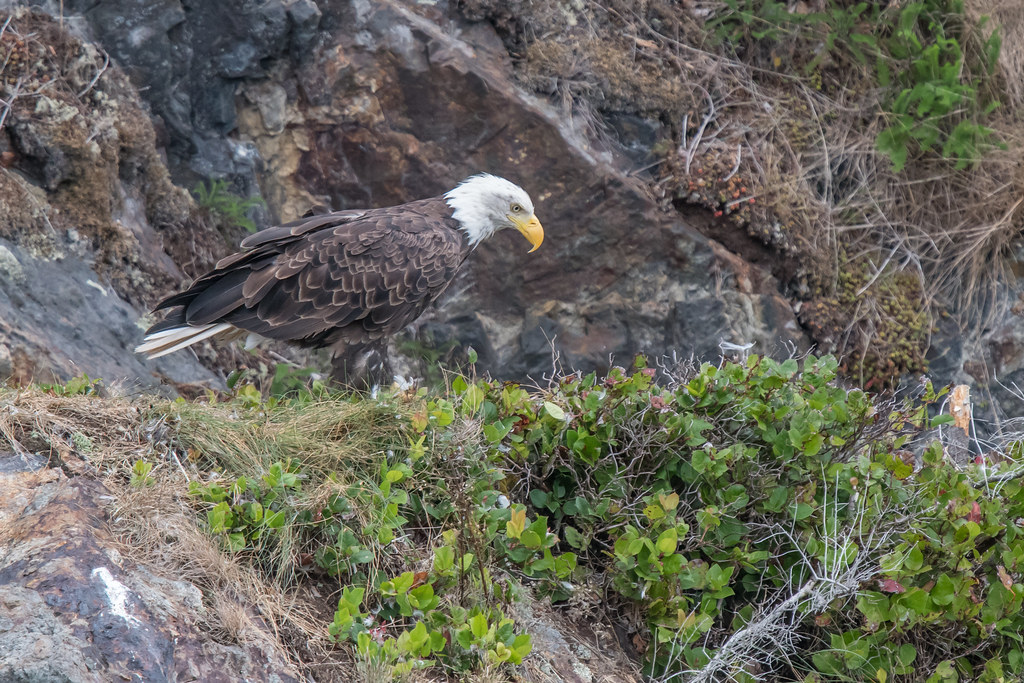
Tim writes: this is a recently-fledged Bald Eagle. In fact, it is so recently-fledged that it still has the thread-like plumes still attached to the end of its flight feathers. These usually fall off after the first couple of flights. The background is the temperate rainforest of western Canada with clinging clouds. I much prefer flying birds against a land background. Partly because I like the challenge as it is much more difficult to achieve compared with a sky background. But also because I think flying birds look better against a land background.
Bald Eagles fledge after as little as two months, but sometimes as long as three and a half weeks depending on food availability. They remain dependent on their parents for a further six weeks after fledging. Young birds gradually acquire the white head and tail of adults, and lose their white body streaking, but this process usually takes about 5 years. They usually commence breeding when they are five. The wing span ranges from 1.8m to 2.3m (5ft 11″ to 7ft 7″) with females being about 25% larger than males. This sexual dimorphism with larger females is typical of birds of prey. Here’s a photograph of an adult showing the white head.

The word bald originally meant having a white patch, so bald horses had a white blaze on their foreheads. The word piebald (black and white patches) comes from the same origin. So a Bald (or Bald-headed) Eagle simply meant white-headed. Similarly, its scientific name leucocephalus means pale-headed. The first part of its scientific name (Haliaeetus) simply translates as Sea Eagle (hali=sea, aetos=eagle).
[registration_form]